Warhammer Age of Sigmar WarCry – Part 2
As promised we continue the review on Warcry today, after we've talked about the Warbands and other miniatures yesterday, the second part will focus on the terrain and gaming board you will fight your matches on.
Included with Warcry as part of the terrain is a 22" by 30" folding game plan. It is printed on both sides, but more on that further below. At first I was a bit irritated, as it is rather large, but it just folds one time less than the Kill Zone boards, as you can see in the comparison picture.
Warcry picks up on the folding game boards, that were introduced with Kill Team. If you remember the "buzz" on the size of them when they were released, that they were not orientating on the 4' by 4' or 4' by 6', but 22" by 30". Why is that? Well, that is size that is more appliable in gaming stores, taking up less space and making it possible for more participants to play on the same or smaller amount of tables. It roughly orientates on the dimensions of trading card games while using mats and such.
The terrain comes in a tall pile of sprues. The large ones and partially open on the edges to give the parts the space they need / for production reasons. There is total of 7 sprues included with the Warcry starter set. We have three more specific ones, covering the wild barricades, the bell tower and a ruined statue of sigmar. And then there are the ruins themself on two sprues, that are included twice.
The ruins pick up the concept of the Azyrite ruins, that are already available for Age of Sigmar and are compatible in height and connecting. But the designs cover different cut outs, like grids or open windows supported by pillars. The sprues shown below are included two times and cover the ruined floors / roofs of the buildings as well, along with a well and smaller scatter terrain.
The more specific parts of the ruins, as mentioned above are covered in these three sprues, that are included one time each. You have one for the head of a statue of sigmar with a small platform on top, a ruined bell tower and a mixed sprue of wooden barricades and a pair of ladders / planks.
Casting is good and the details are properly done. As larger plastic pieces need more connection within the sprue, removing the bits is a bit more time consumig compared to regular kits. And removing the mould lines from the barricades and wooden spikes was quite a bit of work, especially on the ladders as it is tricky to get inbetween the individual tree trunks.
Please pay attention to these steps while you're building the terrain pieces. Depending on how you want to use them and how you want to transport or store them, I highly recommend not to glue down every bit.
Let us begin with the bell tower. It is ruined, has a lovely bit of the bell itself along with multiple skeletons hanging from the ruins themself. You don't need to add them if you don't want to, it is just a very warhammer-ish design choice. If the bell is too imperial / sigmarite for you, you could try getting your hands on a Skaven screaming bell bit and replace it.
You could change the alingment of the walls a bit, add pieces from the other ruins and change the overall appearance of the bell tower, just as recommendation. I didn't glue the ladders to the tower, as you might want to use them on other terrain pieces to give a chance for the miniatures to move up. I left of the cages with the skeletons, not because I didn't like them, they will just make it harder to store and transport this item in a laying position. Great piece, would work for Mordheim as well.
Next up the broken piece of a large Sigmar statue. Very nice, very plastic, goes great along the Sigmarite range, like the Timeworn ruins, to extend or even with the Sector Imperialis terrain kits.
The head is meant to be used with a wooden platform. As mentioned above, I would recommend to simply build the platform as a piece and don't glue it to the head. Same goes for the ladder, just to be able to leave it off, if you don't want to, don't use the platform or use the platform along with a different terrain piece. It stays in place, by just putting it on top, so gamewise no reason to fix it in place.
Now for the "bulk" of the terrain. There has been a bit of discussion beforehand and some people a bit overreacting with comments like "don't build them like in the instructions!". Well, first of all, the instructions merely give you a recommendation and an example. Right, it is a modular terrain, and just one of many ideas on how to assemble them. If you want to keep very close to the Warcry terrain deck, take a look on the cards, see what you need. I came to the conclusion that open L and U shaped ruins, would make the most sense.
Below you see an overview of all the items from one of the ruin sets, so each of them is included twice in this kit. You have three floor tiles, three wall pieces with grids, two closed wall sections, a doorway and three pieces of wall with windows. Added to that is smaller scatter terrain, a well, a low ruin piece and a shattered pillar.
Let's start with the first set. I want to keep them as "pure" as possible. I really like the parts with the gridded windows. Those remind me a lot of the Diablo scenery. You could build a prison with these, or with the second set even a closed room, as the two half pieces of wall can be put together to a damaged piece of wall. Some of the wall pieces have slots to add further wall sections to them, so I went with an door way and broken door way piece. Along with two floor tiles to create a roof.
You could decide not to glue the wall pieces left and right from the door, to be more flexible.
Next set are the closed and windowed wall pieces. The closed wall section is "open" on one side and needs to be connected to a wall. That is actually on of the few flaws of this kit, as I'd appreciated a stopper / end piece, that would keep me more flexible and to create another L-shape. Another one or two small broken pieces to add to the wall mounts would have been usefull.
Now were going on the second set, same pieces but in a different configuration. A C-shaped room or ruin with roof. First the C-shape, you can see the mount in the middle.
I used the small connector along with the gate, to create a L-shape. I didn't glue to these together with the C-shape from the step before. That way I'm more flexible in gaming as well as storing the terrain pieces.
The remaining pieces create an open section with roof. The L-shape is the same as with the first set by accident. Again, I didn't glue the prolonged door way to the L, for the same reason as before.
Now for the scatter terrain, there is a low ruin, the well and shattered pillar. The low wall can be used for its own or added ontop of the other ruin pieces, to create cover above ground.
One of the sprues covers wooden barricades, some of them have skeleton tied to them. Lovely bits again, along with the two planks to connect buildings with each other. This were the only ones that really drove me wild while cleaning up the parts. They take a lot of time, especially to get with your cutter or file in between the logs.
But they create a very cunning and convincing tie in of the terrain into a savage and chaos-overrun world.
There are two things, that I like to point out and that extend the value of this boxed set / series as well. First of all, the terrain, if not build to tall and kept modular as suggested, fits well into the box it came in. Which is a plus, because storing the miniatures isn't the problem, but the vast amount of space terrain can take up is the real problem.
And these ruins are compatible with the Azyrite ruins and townscape. You can mix the wall pieces with them if you want. I already build my Azyrite townscape, but maybe we will see further Ravaged Land kit with Azyrite theme.
I showed you the folding battle board among the first pictures of this review. It is printed on both sides, you can see you have a grey waste land and the ruins of a Dominion of Sigmar. The further Ravaged Lands that were introduced until now, come with those battle boards as well, in the same size of 22 by 30 Inches and they can be combined, if you want to, to create a larger board. The matching side is the wasteland of a former Dominion of Sigmar.
Just a example setup for a quick game, only pieces from the starter kit used. Already fills the table nicely and absolutely fulfills its purpose. If you add a set of the Azyrite Ruins, you're more than good to go.
And a painted example from the Warhammer Store in Koblenz. They used guide from one of the last white dwarf, prior to the release of Contrast. I like the green tinted look. There is a video on WarhammerTv on how to paint the Ruined City.
Conclusion
Okay, we had the first conclusion in yesterday's Part 1 of the Review. The warbands are really well done, designed and produced to a high level. The game itself is fast paced, we talked about that as well. The terrain is another high quality product and very generous part of this kit. The overall price of 130 EUR is of course a raised bar, but there is a lot that comes with it.
To be honest, I wasn't sure what to make with Warcry in the beginning, when it was teasered earlier this year at GAMA 2019. We would have a third season of Warhammer Underworlds this year, usually starting in summer. It is 2019, so there was a lot and strong rumours on a revival of Mordheim for its 20th anniversary, so a third "major" release for Warhammer Age of Sigmar seemed like a bit much. BUT with that said, and Warcry taking the role of Kill Team for Age of Sigmar, maybe, as we did with Rogue Trader back in autumn last year and the Cities of Sigmar announcement on Open Day, we will see something similar for Mordheim. A self-contained set, that is a supplement for Warcry, but covering the free people and / or undead. Just an idea that I deduced from what we saw last year and some other factors.
Of course not everything we have seen from Kill Team will be adaptable to Warcry. There are similarities, like the Kill Zones, which are called Ravaged Lands in Warcry. Usually a proper deal for terrain, I covered Sector Fronteris and Sector Mechanicus on here as well, and I am really looking forward to the Shattered Stormvault and the other kits that we may see down the road. Kill Team didn't have the fixed warbands, that Warcry already covers and build around re-using the multipart kits from the regular 40k range. So that is different, to a degree, as you can build your own Warcry warbands with the card packs for currently 9 factions. I assume that we will see further supplements, but I don't think that we will go to that extend with all the books that are available for Kill Team, but I might be proven wrong there. But similar to the deep dive they did into the designs and facettes of chaos, there might be further micro-factions, similar to what we've seen with Underworlds, that will see some love.
To me this box and the further Ravaged Lands supplements are very interesting, from the point of view as a general wargamer. The terrain is not too warhammer specific and can be used with other fantasy settings as well, for example Frostgrave, Lord of the Rings or so. The compact build, supplied directly with a board and being able to be stored within the box itself, should be very appealing for casual gamers, that don't have a large hobby room or need to stow away their further gaming items in a tight space. Well done Games Workshop, looking forward to where the journey goes to for this new system and product range.
Warhammer Age of Sigmar and Warcry are brands by Games Workshop
The reviewed product item was provided by the manufacturer.
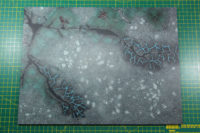
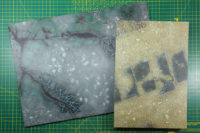
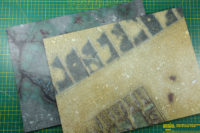
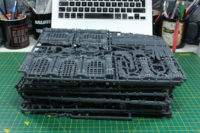
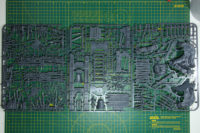
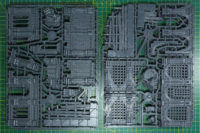
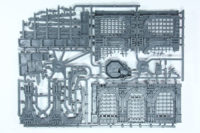
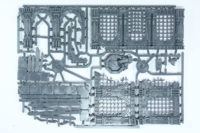
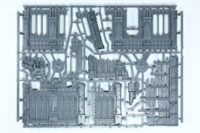
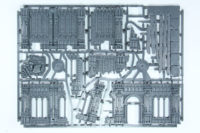

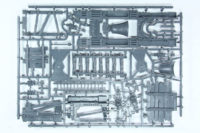
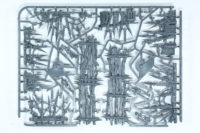
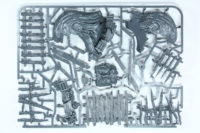


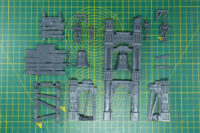




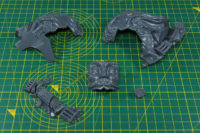
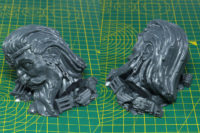
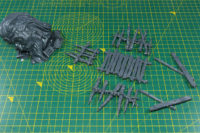
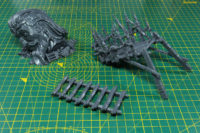
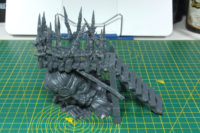
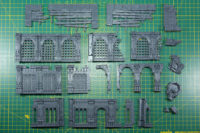
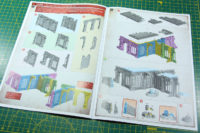
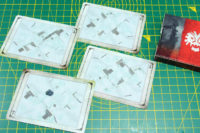
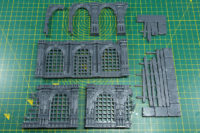
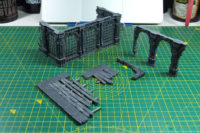
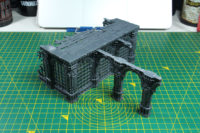
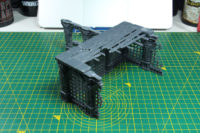

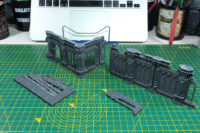
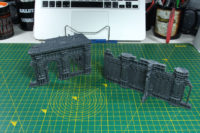
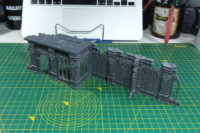
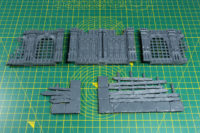
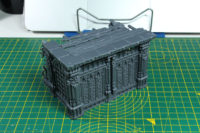
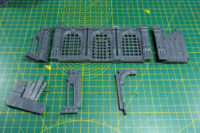
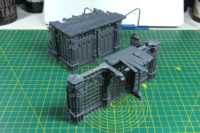
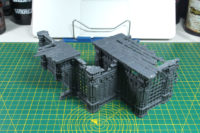
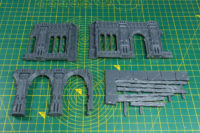
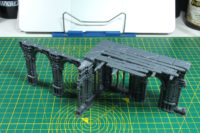
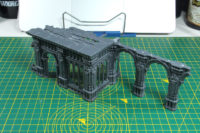

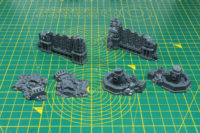
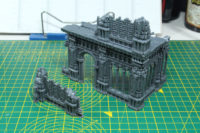
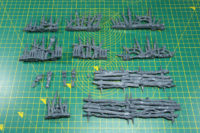
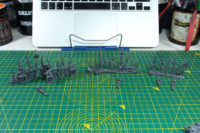
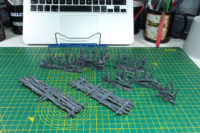
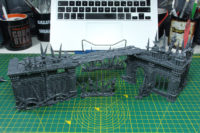
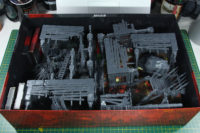
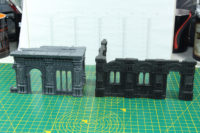
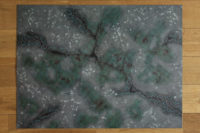
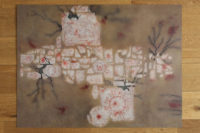
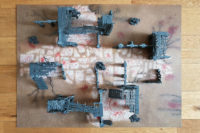
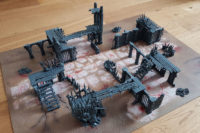

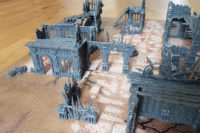
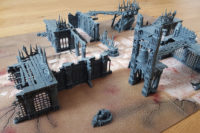

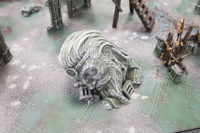
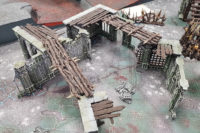












Leave a Reply